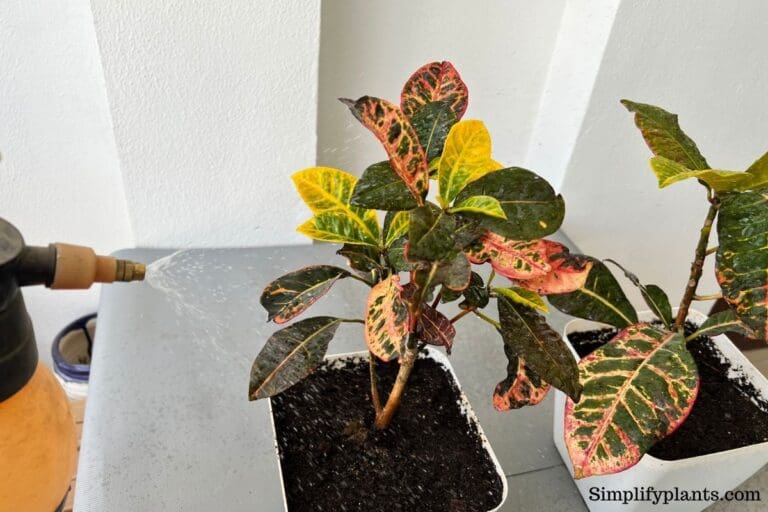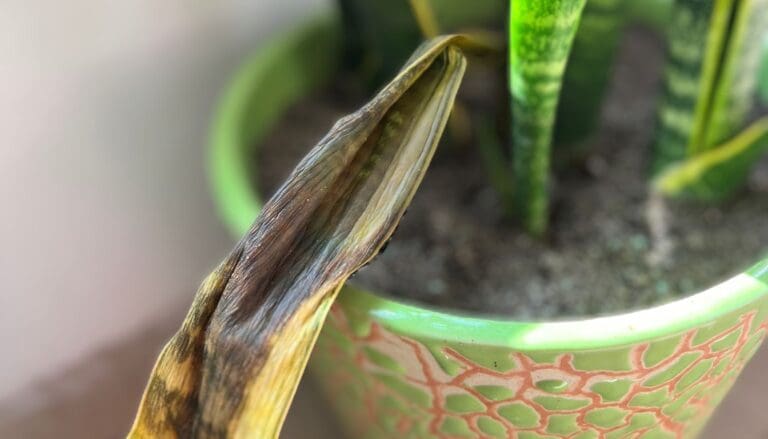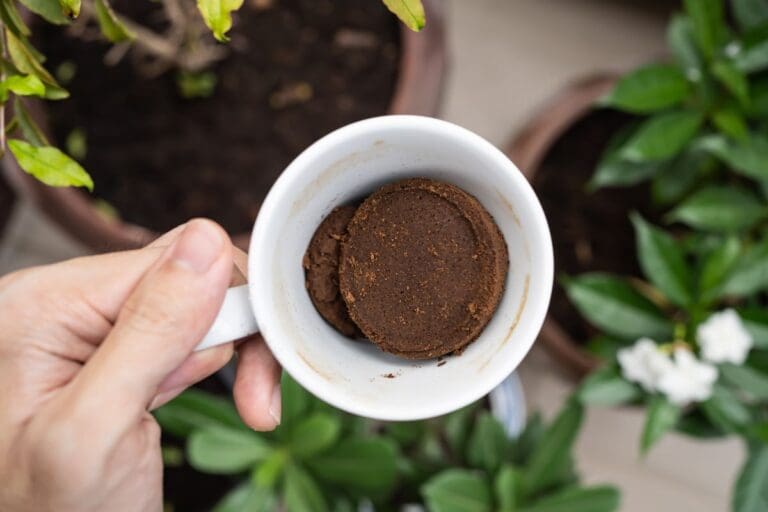How To Care For A Schefflera Plant? (Ultimate Care Guide)
Schefflera plants are native to the tropical and sub-tropical regions of the world in countries like Taiwan, Australia, and South China. They are popularly grown as houseplants all around the US and other parts of the world due to their low maintenance nature.
Schefflera plant needs bright indirect light and watering at the right time to maintain moist soil. Fertilize the plant during the growing seasons and grow it in loamy, well-draining soil. Ensure at least 50% humidity around the plant and protect it from extreme cold and frost.
This article will discuss the different factors you need to keep in mind to grow your Schefflera healthily, discuss the common problems this plant undergoes, and suggest care tips.
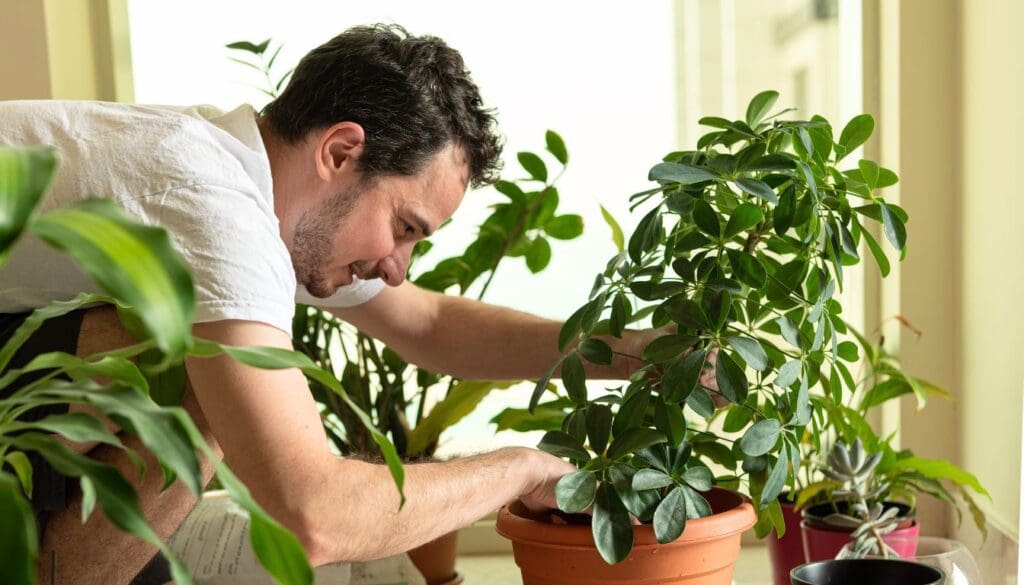
Please note: Simplify Plants is reader-supported. Some links in the post are affiliate links and I get a commission from purchases made through links in the post.
Schefflera plant overview
Schefflera plants originate in the wild in tropical areas and are grown as houseplants in various parts of the US.
These plants can reach a height of 12-15 feet in the wild, but indoors they grow up to 5-6 feet.
They are loved for the umbrella-shaped bright glossy leaves and come in variegated and non-variegated foliage.
They are also excellent air purifiers and detoxifiers as they absorb pollutants from the air and release oxygen.
Due to their cluster of leaf sets that grow in an umbrella shape, they are also known as umbrella plants.
Let us check some of the common variety of Schefflera you can fill your homes with:
| Variety | Identification |
|---|---|
| Dwarf (Schefflera arboricola) | These grow in a compact shape up to a height of 3-4 feet with small, dark green leaves. |
| Alpine (Schefflera alpine) | These reach up to 5-6 feet indoors and can withstand cooler conditions than other varieties. |
| Petite (Schefflera petite) | Petite are dwarf Scheffleras with variegated lime-green leaves. |
| Madame de Smet | They have variegated green, and golden foliage. |
| Australia Umbrella Tree (Schefflera actinophylaa) | They can grow into huge trees but stay compact and bushier in pots. They have glossy green leaflets. |
| Amate | These have green and glossy leaves. |
| False aralia (Schefflera elegantissima) | They are taller and slender than other varieties and have gorgeous serrated leaves. |
| Green gold (Schefflera gold capella) | They grow rapidly and need regular pruning. The leaves have a green and golden combination. |
| Janine | They have cream and light green variegation. |
| Taiwanese Schefflera | The dark glossy leaves resemble the spokes of a wheel and are covered with fine silver hair. |
| Trinette | It needs a lot of bright light to maintain its gorgeous green foliage splashed with creamy yellow patches. |
| Frodin (Schefflera heptaphylla) | Slender and narrow leaves with green and yellow tint and rich medicinal values. |
Are Schefflera easy to grow?
Schefflera plants are suitable for beginners with little prior experience in gardening because they are not fidgety and can withstand various conditions.
However, that does not mean you can neglect your plate and keep it ignored at a corner.
You have to provide the ideal growing conditions for your plants if you want to keep them healthy.
Is Schefflera an indoor or outdoor plant?

Schefflera plants can grow indoors and outdoors under the right conditions.
However, since they are tropical plants, they can survive outdoors only if you live in areas with mild-moderate temperatures.
This plant will not survive outdoors if you live in regions with too harsh cold and frost.
In that case, you have to bring it inside before the onset of winter.
In USDA zones 10-11, Scheffleras can survive all year outdoors.
If you stay north of this area, it is best to grow the plant as a houseplant to protect you from the cold and low temperatures.
But you must not forget that even if you grow it inside, the plant must get the right conditions to survive and flourish.
Schefflera plant care
To keep the umbrella plant happy and thriving, you must know its correct care needs.
Now let us discuss the various requirements of this plant that you need to keep in mind.
Schefflera light requirements

Schefflera plants do the best in bright indirect light.
In nature, they grow under shades of bigger trees that protect them from the sun’s scorching rays, giving them warmth and dappled sunlight.
The Schefflera variants with variegated leaves need more light than those with green leaves.
This is because the plant needs more light to maintain its variegated colors, and in the absence of sufficient light, the plant will lose its variegation.
These plants cannot survive in low light conditions.
If you keep it in one such spot, the plant will show signs of stress.
If the plant gets low natural light, install artificial grow lights.
However, while choosing the perfect spot for your umbrella plant, remember not to keep it where the direct sunlight will hit the plant because it will lead to sunburn and leaf scorch.
Direct sunlight will dry the soil too rapidly, and the plant will dehydrate faster.
If the spot you choose gets direct light, you can put a sheer curtain on the window to filter the light or move the plant 4-5 feet away from the spot.
You should rotate the plant weekly so that all the sides get even light.
This prevents the plant from growing leggy and bending on one side.
Schefflera water requirements

Schefflera plants need moist soil but are highly sensitive to overwatering.
It is important to understand the difference between soggy soil and moist soil.
Refrain from overwatering the plant because they cannot tolerate soggy wet soil.
A moisture meter is useful for understanding the soil’s moisture content.
It is a device that is inserted into the soil and gives the readings of the moisture content.
So if you are unsure whether you need to water the plant, you can get this device and plan the watering schedule accordingly.
Schefflera loves soil that has some moisture and is not bone dry because tropical plants need moisture in the soil.
Changing the watering schedule per season is important, and not following the same pattern all year round.
This is because in summers, when the sun is intense, the evaporation rates are much higher, so the soil gets dry quickly.
But in winters, the soil stays wet for longer when sunlight weakens.
So your plant will need more frequent watering in summers than in falls and winter.
Schefflera fertilizer needs

Fertilizing houseplants is extremely important because, with daily watering, the soil begins to lose its nutrient value over time.
So fertilizing the plant helps it get more nutrients and boosts its growth.
Schefflera are not heavy feeders, so if you feed them too regularly, you may risk burning the roots due to overfertilization.
You can fertilize the Schefflera with a balanced NPK 20-20-20 fertilizer during the growing season because it stays active during this time.
If you do not want to use chemical fertilizers, you can also use organic fertilizers like compost, eggshells, aquarium water, banana peels, etc.
The best time to fertilize the plant is during March and September, just before the fall.
Do not fertilize the plant any time after fall, as the plant starts getting dormant with winter’s arrival.
If you fertilize this time, the roots may get burnt due to fertilizer burn.
Resume fertilization with the onset of spring.
Schefflera soil requirements
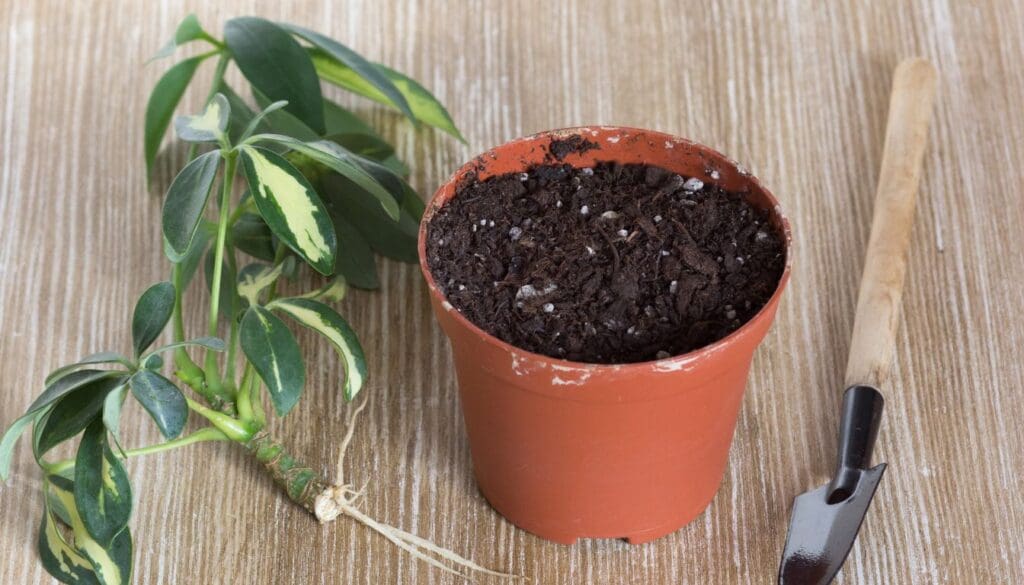
Schefflera needs loamy, well-draining soil that is slightly acidic with a pH of around 6.0-6.5.
The soil must be loose and sandy so that it does not get tight on the roots.
Schefflera plants like their roots to breathe, so if the soil is too tight, the airflow in the soil will reduce.
Do not use clayey soil to grow your Schefflera because it tends to get compact and holds too much water.
Use sandy soil as it stays loose and does not hold excess water.
Therefore, while preparing the soil, ensure you keep the ingredients light.
Here are some ideal soil mixes for Schefflera:
Recipe 1
- 3 parts potting soil
- 1 part perlite or vermiculite
- 2 parts coco coir
Recipe 2
- 3 part potting soil
- 1 part sand
- 1 part vermicompost
Schefflera humidity requirements
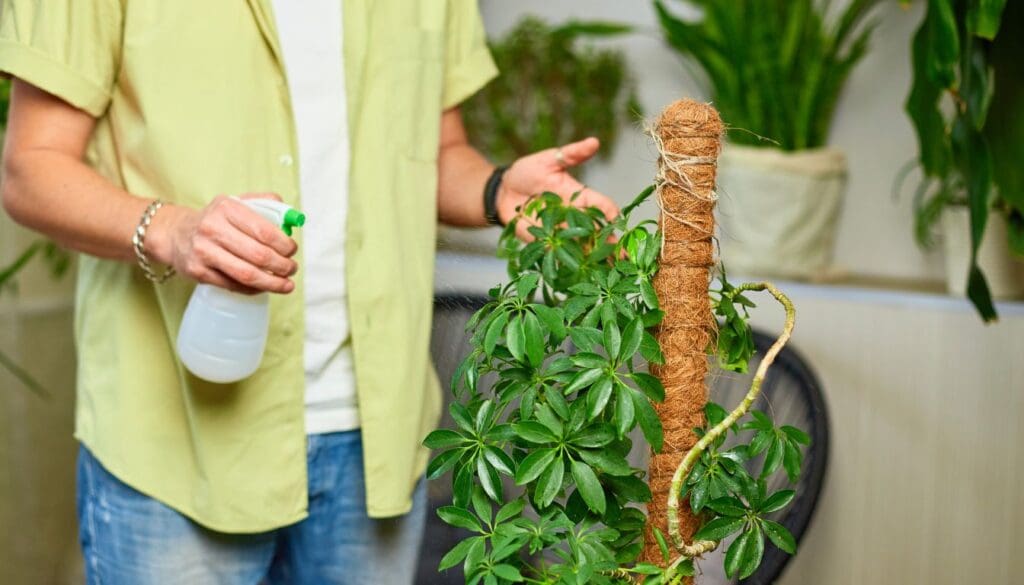
One distinctive feature of umbrella plants is their fondness and need for humidity.
This is because they grow in tropical areas, requiring humidity to thrive.
They cannot tolerate dry air around them, and low humidity can result in drooping plants, leaf dropping, leaf curling, and other problems.
If you want your Schefflera to grow faster and be healthy, you must ensure that the plant gets at least 50% humidity.
Anything below 40% can seriously hamper the growth of this plant.
The humidity they need is unavailable in our homes as they tend to have drier areas.
However, they are several ways to increase the humidity, which we will discuss below:
- Humidifier: This is the best device to give the plants the necessary humidity. Just invest in a good humidifier ad fill it with water, and place them near your plants.
- Misting: Misting is a common way to spray your plant with water. Though they help the plant increase humidity, their effects are very short-lived as the water evaporates quickly.
- Pebble tray: Another effective way is to make a pebble tray. Fill a large tray with pebbles and water and place the pit on top of these pebbles.
- Relocation: Relocating your plant to a place with higher humidity than the rest of the house, like the kitchen, bathroom, and laundry room. But make sure the area has lots of light and airflow.
- Grouping: You can group your Schefflera with other humidity-loving plants.
- Aquarium: If there is an aquarium at your home, you can keep the plant near that. As the water from the tank evaporates, the humidity will increase.
Schefflera temperature tolerance

Schefflera needs moderate temperature and cannot tolerate extreme temperature ranges.
Extreme cold and extremely hot seasons can harm the plant’s health.
Being tropical plants, they like warm and humid growing conditions, so when you are growing them as houseplants, you too need to give them that suitable temperature range.
These plants grow the best within the temperature range of 65-90°F.
If you live in areas with very harsh winters, then this plant will not survive outdoors.
In such cases, you should bring them indoors to protect them from the cold.
Keep this plant away from cold drafts, vents, heaters, and air conditioners because those areas have fluctuations in temperature, which is unsuitable for the plant.
Pruning Schefflera
Pruning is an essential part of plant care that is often ignored.
Pruning the plants stimulates the growth hormones, which improve the growth of the plants.
Schefflera, grow leggy and thin if you do not prune the plant for a long time.
Hence you must prune it periodically if you want it to grow bushy and push out more growth.
You should always prune this plant during the spring and early summer because this is when they remain most active.
Pruning can give the plant a lot of stress, so doing it during the growing season helps it recover faster.
Do not do heavy pruning during winter as the Schefflera is already under a lot of stress.
You may remove the dead leaves or branches any time of the year, but heavy punning must be done only in the spring and early summer.
Also, remember not to prune more than 25% of the plant at one time.
Let us quickly discuss the steps of pruning your Schefflera:
- Always use sharp pruning shears so that the cuts are clean.
- Make sure to sterilize it before use to prevent any spread of germs.
- Wear gloves to protect your hands from the harmful toxic sap of the plant.
- Examine the plant well and decide which places you wish to prune off.
- Remove the dead yellow parts first.
- Then prune off the leggy areas.
- Do not prune more than 25% of the plant.
Repotting Schefflera plant

Schefflera are medium growers, and though they do not grow too rapidly, they do need repotting every few years.
If you do not repot the plants, the rots system gradually covers the entire pot, making the plant root-bound.
The rots become crumbled and suffocated in a lack of space and airflow.
When the plant gets root-bound, the growth rate reduces due to insufficient nutrients, and the drainage holes gradually get clogged by the extensive roots.
To prevent this condition from occurring, repotting the Schefflera plant to a new bigger pot must be done every 3-4 years.
Apart from root-bound plants, you must repot if your plant experiences root rot.
Spring and summer is the best time to repot your Umbrella plant.
However, if it suffers from root rot, you must report it immediately.
Schefflera propagation

Propagation is the most economical and easiest way to get a new plant.
You can propagate new umbrella plants from the mother plant if you do not want to buy or throw off the cuttings of the plant.
Schefflera can be propagated in water and soil, and you can propagate it from seeds and cuttings.
Here are a few important tips for propagating your Schefflera:
- Always choose a healthy cutting to propagate. A sick, stressed plant will not propagate successfully.
- The plant must be mature and not too young.
- Take a sharp pruning shear.
- Sterilize it before cutting the stem.
- Make a clean cut.
- In the case of water, propagation fills a glass with clean water and dips the cutting. Change the water every 3-4 days to keep it clean. You should see roots after 1-2 months.
- In soil, propagation fills up a small pot with light, well-draining soil mix and dips the cutting.
- Mist the plant with water whenever it gets dry.
- Once the roots appear, wait for them to grow stronger and repot them in a bigger pot with proper soil mix.
Schefflera toxicity

Schefflera plants contain very harmful calcium oxalate crystals, which, if ingested, can cause multiple minor and severe problems.
The plant’s sap contains these crystals, which is why it is toxic to humans and animals.
If you have dogs, cats, birds, or other pets at home or with children, you must keep these plants away from their reach.
Pets tend to nibble, bite, playing with plants, so if accidentally they ingest any part of the plant, it can cause complications.
Touching the sap can cause itching, redness, and swollen skin, and ingestion can lead to a series of problems like:
- Nausea
- Vomiting
- Diarrhea
- Respiratory difficulty
- Shortness of breath
- Cardiovascular problem
- Redness around mouth
- Swollen mouth
- Intestinal issues
So it is highly recommended to keep this plant at a spot your four-legged friends or children can reach.
Also read: Are Schefflera Plants Poisonous? (Dogs, Cats & Other Animals)
Schefflera pest infestations

Pest infestations are a problem that torments every plant and plant owner.
The most common pest that infests Scheffleras are scales, mealybugs, spider mites, thrips, and aphids.
Pest infections generally occur due to unsuitable growing conditions around the plant, which attract these bugs.
Most pests attack due to excessive dampness and little airflow around the plant.
A dry, dehydrated plant also becomes the perfect breeding spot for spider mites.
These pests attach themselves to the plant and suck out the nutrients from the sap of the plant, gradually making it weaker and feeble, which, if not checked, dies after some time.
If you notice pest infestations in the plant, you must take action without delay.
The more you delay, the more severe the infestations will grow.
Below we will discuss the precautions you must take to clear the pests from the plant.
- Isolate the plant immediately.
- Take the plant to a sink and wash the foliage under running water to remove the nasty bugs.
- If there are still areas with a heavy infestation, prune off those parts.
- Use a Neem oil and water solution, spray it generously all over the plant, and let it stay.
- Keep repeating it for a few days, and if you still see the remaining pests, use stronger chemical pesticides.
Remember not to keep the plant in a spot with poor light and ventilation.
Do not keep the soil too wet and water only when the soil is dry.
Schefflera problems
Sometimes despite taking perfect care of the plant, your plant still shows signs of stress.
When this happens, do not panic.
Instead, try finding out the issues behind those problems and take suitable care.
We will discuss a few problems your plant shows and ways to cure them.
Schefflera leaves turning yellow

Yellow leaves on your Schefflera can be a sign of multiple problems.
Old leaves begin to get yellow and withered before falling off, and that’s normal.
But you should check the plant if you see many leaves getting yellow.
One of the most common problems causing yellow leaves is incorrect watering.
If you underwater or overwater your plant, it can get yellow leaves.
The Schefflera also begins to show yellowing in unsuitable lighting conditions.
Low light can make the leaves yellow and droopy, and too much scorching sunlight can also cause yellow dry, crispy leaves.
- You should prune off these yellow leaves as they will not turn green again.
- Check the watering and water the soil only when the top 2 inches are dry.
- Do not water if the soil is wet, and do not keep it bone dry for too long, which can dehydrate the plant and make it yellow.
- Keep the plant in a spot that does not receive direct sunlight but has a lot of bright light. Hot direct sunlight can scorch the leaves, making them yellow and withered.
- If your plant is placed near a window with direct sunlight, move it a few feet away.
- If your plant is not getting enough light, then install grow lights.
Schefflera leaves turning brown

The primary causes that lead to the browning of the Schefflera leaves are incorrect watering, poor humidity, and overfertilization.
If you notice brown leaves on your umbrella plant, follow these:
- Prune the brown leaves from the plant.
- If you think you have overfertilized the plant, cut down on it and do not fertilize for some time.
- Do not fertilize the plant in winters.
- If the plant gets too much light, move it to a shadier spot with indirect bright light.
- If the plant’s humidity level is low, check it with a hygrometer and use a humidifier, pebble trays, or misting methods to increase the humidity.
Schefflera leaves curling
A common problem that Schefflera plants undergo is the curling of the leaves.
Among the multiple reasons that can cause curling, low humidity is the most common reason.
Schefflera plants hate soggy soil but need humidity.
If there is poor humidity around the plant, the leaves begin to curl to save the moisture from evaporating.
- Use a hygrometer to check the humidity level.
- Use humidifiers or pebble trays to increase humidity.
- Mist the plant frequently in summers to keep the leaves clean.
- You can group the Schefflera with other moisture-loving plants.
- Do not keep the plant near cold drafts, vents, or air conditioners because they tend to absorb the humidity from the plant.
- Use filtered water or distilled water to water the plants.
- Do not water the plant with extremely cold or hot water. Only use room temperature water.
Schefflera plant dropping leaves

Leaf dropping can be due to pest infestations, poor lighting conditions, repotting stress, etc.
- Check the plant for signs of pest infestations. Examine the leaves and the undersides of the leaves. If you find any signs of pests in the plant, wash the plant well and spray the plant generously with Neem oil or pesticide to clear the pests.
- Check the soil. If you find it too wet and soggy, let it dry for a few days. Keep it at a spot with lots of light and airflow. Do not water again unless the soil is dry. If the plant is getting less light, it will need less water.
- Give it time to recover the stress if you have repotted your umbrella plant recently. Provide the ideal conditions, and the leaf drop will slowly reduce.
Root rot in the Schefflera

Root rot is one of the most serious problems your umbrella plant can experience.
If not checked at the earliest, it can kill your plant.
When you continuously water the plant, and the soil is not allowed to dry, it becomes soggy.
In the soggy soil, the airflow is restricted, and the roots begin to suffocate in lack of oxygen.
Due to this, the roots start to decay, eventually affecting the entire plant as the roots fail to function.
In case of root rot, you must follow this:
- Take out the plant from the pot.
- Wash the roots under clean running water.
- Examine the roots properly and trim off all the rotten roots and parts of the plant to prevent the fungus from spreading to the healthy parts.
- Spray fungicide all over the healthy roots so that they remain healthy
- Make a fresh mix of potting soil, compost, and perlite.
- Take a new pot and make sure it has a drainage hole at the bottom.
- Repot the pruned plant in this new soil in the new container.
- Water it thoroughly and keep it in a place that receives bright and indirect sunlight.
Leggy growth in my Schefflera
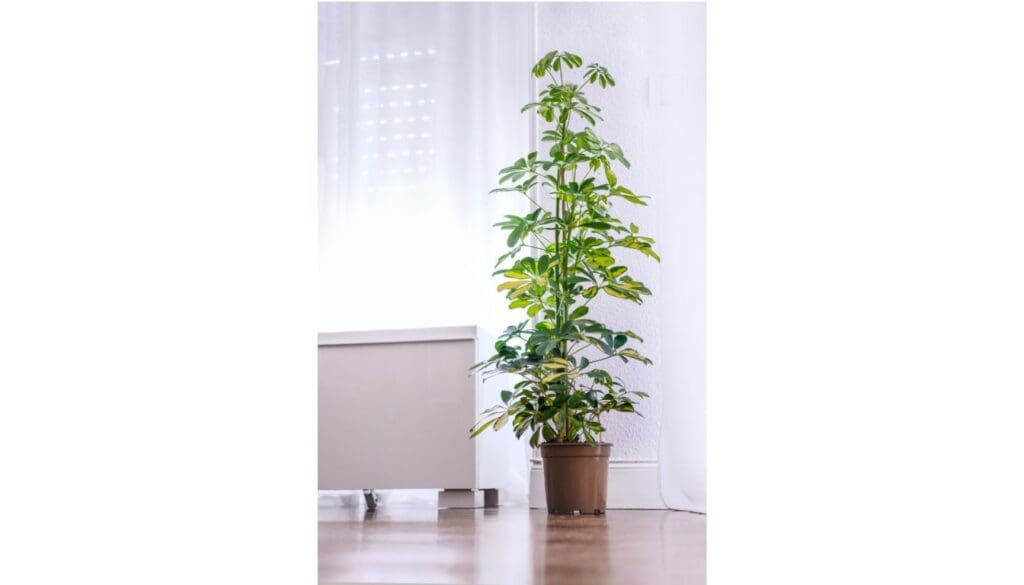
Leggy growth in the Schefflera is a common problem caused due to reasons like low light and not pruning the plant when needed.
When the plant does not get enough light, it stretches toward the light source, resulting in a tall thin stem and a wider distance between the leaves.
Pruning the plant is a great idea to prevent legginess in your plants.
It encourages the plant to push out more leaves on the stems, making it look fuller.
Also, you should rotate the plants weekly so the light reaches all the sides evenly, and the plant does not lean on one side.
Also, regular fertilization is important to prevent the plant from growing leggy.
White spots in my Schefflera
White spots on umbrella plants can be because of mealybugs, powdery mildew, low light, etc.
If your Schefflera has pests on them, you must wash the plat with a hose and apply Neem oil or spray pesticides generously all over the plant.
After a few days of spraying it, you will see the bugs have left the plant.
Avoid placing the plant in a spot with no airflow, as that can encourage the growth of powdery mildew.
Also, ensure the plant is exposed to sufficient bright and indirect light.
Tips for caring for the Schefflera plant
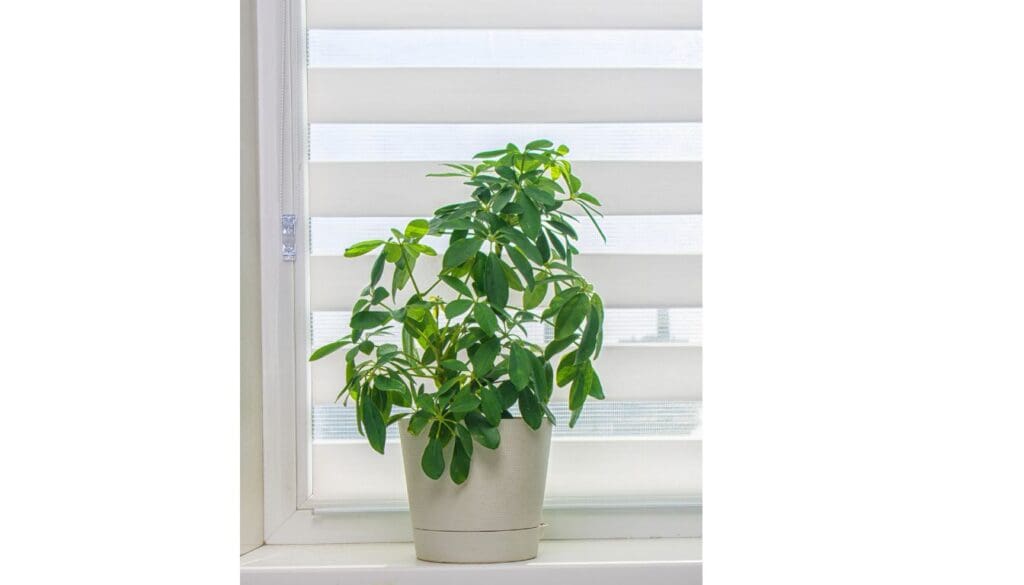
Here is a glimpse of all the needs of the Schefflera.
| Factor | Care tips |
|---|---|
| Light | Bright indirect light No direct sunlight Not suitable for low light conditions |
| Water | Water when the soil is dry Prone to overwatering, so do not keep the soil wet. |
| Soil | Use well-drained loamy soil Slightly acidic with pH around 6.0-6.5 |
| Humidity | At least 50% humidity is mandatory around the plant. A humidifier is the best way to provide humidity. Mist the plant in summers. A pebble tray is also recommended. |
| Temperature | The ideal temperature is 65-90°F. Protect from frost and harsh cold. If it is outside, bring it indoors in winter. |
| Fertilizer | Fertilize in the growing seasons. A liquid fertilizer of 20-20-20 NPK is ideal. You can also add organic compost. No fertilization is required in winters. |
| Repotting | Repot every 3-4 years Repot immediately in fresh soil in case of root rot. Repot during spring and summers only. |
| Pruning | Pruning encourages more growth. Prune in spring and summer only. Do not prune more than 25% of the plant. |
| Propagation | Schefflera can be propagated from cuttings or seeds. You can propagate it both in soil and in water. |
Final words
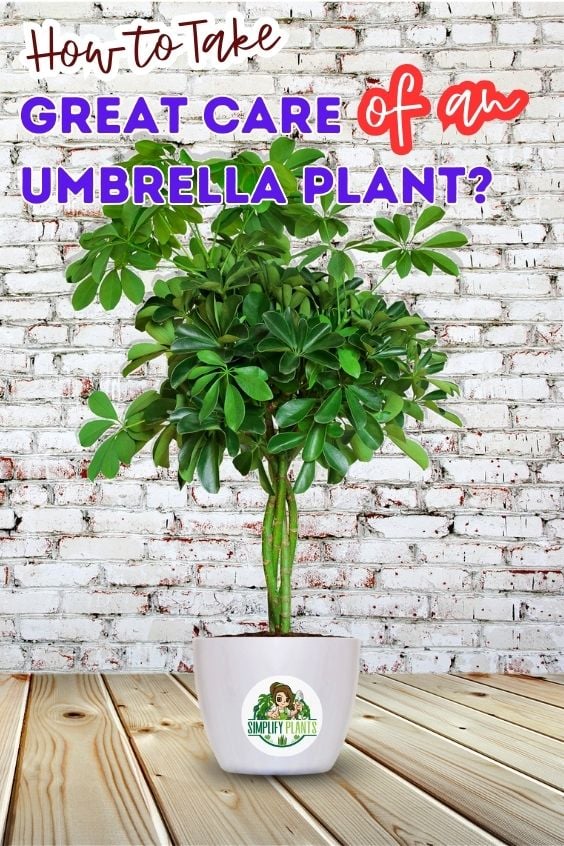
Schefflera, or umbrella plant is a beautiful tropical species that is easy to care for and will thrive under the correct growing conditions.
Along with the basic care requirements, I have also mentioned the common problems this plant can experience and how you can deal with them. You can always bring your plant back to health with the right steps and prevent the problems from occurring again.
Reference: Wikipedia, Sciencedirect, Britannica, American Society for Horticultural Science, Schefflera taxonomic history.
Recommended Garden Supplies
| Product Image | Our Recommended Gardening Supplies | Check Offers! |
|---|---|---|
Top Top
Top
Top
Top
Top
Top
Top
Top | rePotme Houseplant and Tropical Classic Potting Soil Mix | Check Offer On Amazon |
 Top
Top
Top
Top
Top
Top
Top
Top | Espoma Organic Indoor Plant Food | Check Offer On Amazon |
 Top
Top
Top
Top
Top
Top
Top
Top | GooingTop LED Grow Light 6000K Full Spectrum Clip Plant Growing Lamp | Check Offer On Amazon |
 Top
Top
Top
Top
Top
Top
Top
Top | Soil Moisture Meter | Check Offer On Amazon |
 Top
Top
Top
Top
Top
Top
Top
Top | Govee Hygrometer Thermometer, Bluetooth Enabled! | Check Offer On Amazon |
 Top
Top | LEVOIT Humidifiers for Large Room(Best For Plants) | Check Offer On Amazon |
 Top
Top
Top
Top
Top
Top
Top
Top | Upgraded DIY Automatic Drip Irrigation Kit, 15 Potted Houseplants Support | Check Offer On Amazon |
 Top
Top
Top
Top
Top
Top
Top
Top | Stainless Steel Heavy Duty Gardening Tool Set | Check Offer On Amazon |
 Top
Top
Top
Top
Top
Top
Top
Top | Bonide Insecticidal Soap | Check Offer On Amazon |
 Top
Top
Top
Top
Top
Top
Top
Top | Bonide 32 oz Spray Neem Oil for Organic Gardening | Check Offer On Amazon |
 Top
Top
Top
Top
Top
Top
Top
Top | Garden Safe Fungicide | Check Offer On Amazon |



